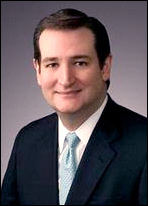The big story of yesterday’s Oklahoma primary voting is the defeat of six-term Rep. John Sullivan (R-OK-1), who fell to military reserve pilot Jim Bridenstine by a substantial 54-46 percent margin. Sullivan becomes the fourth non-paired incumbent to fail in a renomination bid during this election cycle. Reps. Jean Schmidt (R-OH-2), Tim Holden (D-PA-17), and Silvestre Reyes (D-TX-16) are the other three.
In the open 2nd District of Oklahoma, both parties will feature Aug. 28 run-off elections. The Republicans will battle between businessman Markwayne Mullin (42 percent) and state Rep. George Faught (23 percent). Democrats will likely have a close contest between former district attorney Rob Wallace (46 percent) and Tulsa County Farm Bureau President Wayne Herriman (42 percent). Rep. Dan Boren (D) is retiring. This may be the Republican’s best conversion opportunity in the country.
Turning to South Carolina, the general election candidates are now set in the Palmetto State’s new 7th District. Horry County Council chairman Tom Rice was a strong 56-44 percent winner over former lieutenant governor Andre Bauer in the Republican primary. Rice is a prohibitive favorite now in the general election. In the run-off campaign that lasted just four official days after the Horry County court ruled that the Democrats must hold a secondary vote, former Georgia state Rep. Gloria Tinubu easily beat back attorney Preston Brittain, 73-27 percent. The run-off was challenged because votes for a withdrawn candidate were not originally included in the final tally.
In Utah, Sen. Orrin Hatch, as expected, was an easy 67-33 percent winner in his Republican primary battle with former state Sen. Dan Liljenquist. Hatch will now cruise to re-election to a seventh term in November.
Another incumbent turned back a serious primary challenge with ease. Three-term Rep. Doug Lamborn (R-CO-5) repelled self-funding opponent Robert Blaha by a strong 62-38 percent margin despite the challenger spending more than $720,000 of his own money. Lamborn, who has had trouble solidifying what should be a safe Colorado Springs district, appears to be building the kind of strength one would expect to see from a now veteran incumbent.
Finally, in New York, a series of primaries produced no surprises. Embattled Rep. Charlie Rangel (D-NY-13), challenged by four Democrats, again survived the onslaught but with only 45 percent of the vote. State Sen. Adriano Espaillat was his closest challenger with 40 percent; former Clinton Administration official and 2010 congressional candidate Clyde Williams only recorded 10 percent of the vote.
Rep. Nydia Velazquez (D) was a 58-31 percent winner over New York City Councilman Erik Dilan. Velazquez will now represent the new 7th District, which contains 71.2 percent of her current constituency. Neighboring Rep. Yvette Clarke (D-NY-9) was an easy winner in her primary with a huge 88 percent of the vote.
Elsewhere in the state, two individuals won open-seat New York City races that effectively punches their ticket to Congress. State Assemblywoman Grace Meng was an easy Democratic primary winner and will succeed retiring Rep. Gary Ackerman in the new 6th District. In Brooklyn, Democratic state Assemblyman Hakeem Jeffries will replace retiring Rep. Ed Towns in the new 8th District.
New York City attorney Sean Mahoney won the right to challenge freshman Rep. Nan Hayworth (R) in the new 18th District. Mahoney won despite the district being anchored in Westchester County. As expected, Rep. Bill Owens (D) will defend his marginal district against 2010 nominee Matt Doheny (R). And, former Erie County Executive Chris Collins (R) will face Rep. Kathy Hochul (D) in a new district that heavily favors the Republicans.
Finally, in the US Senate race, conservative Wendy Long easily defeated New York City Rep. Bob Turner (R-NY-9), who had no legitimate chance of remaining in the House post-redistricting. Long, also officially carrying the Conservative Party line, will face Sen. Kirsten Gillibrand (D) in a long shot November challenge effort.

